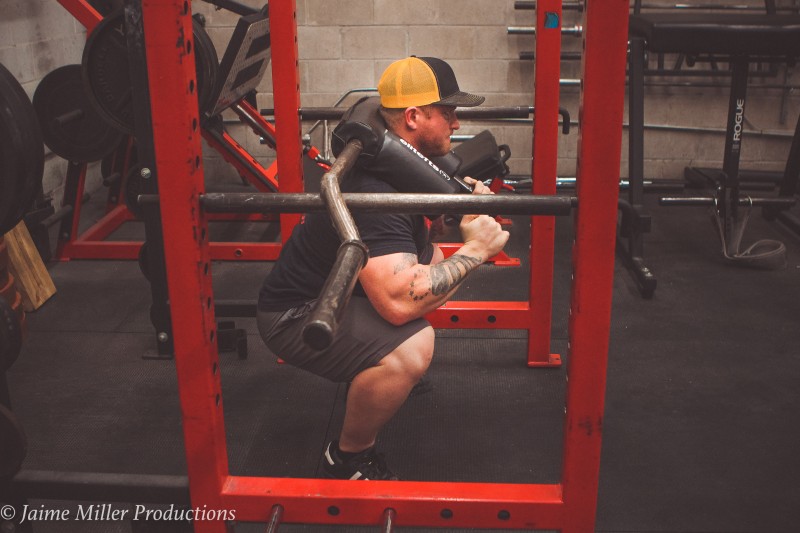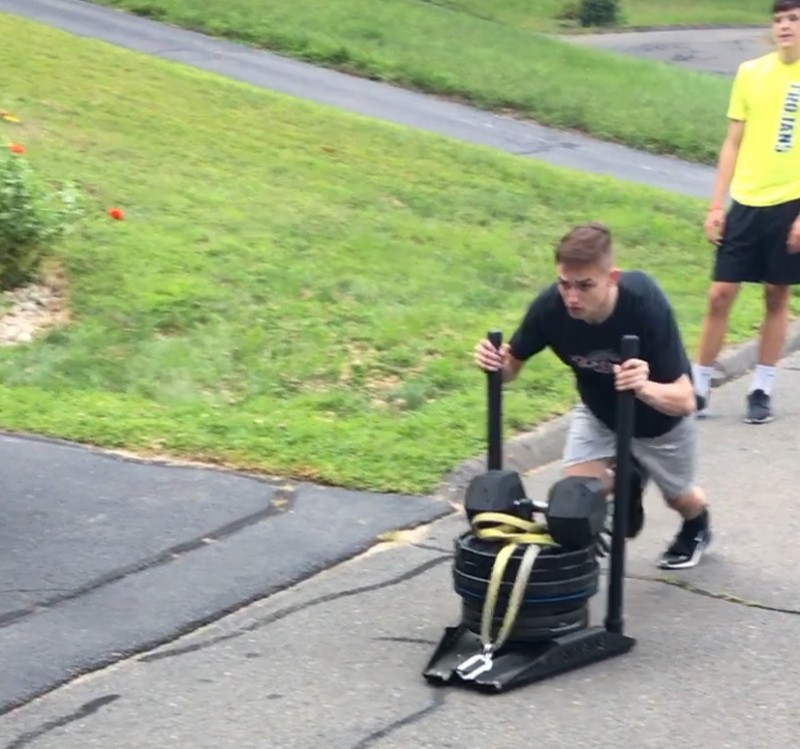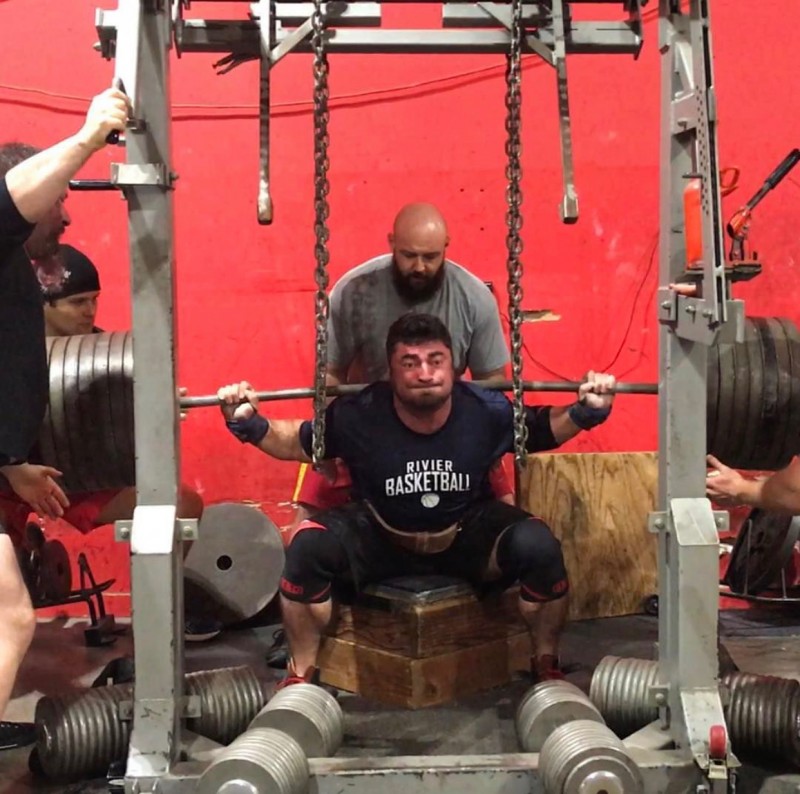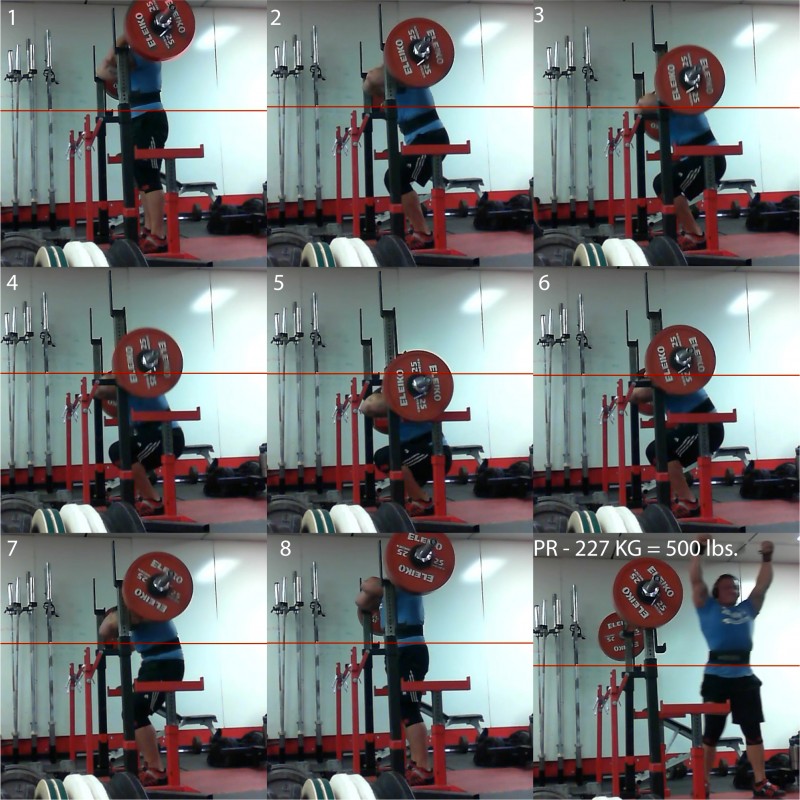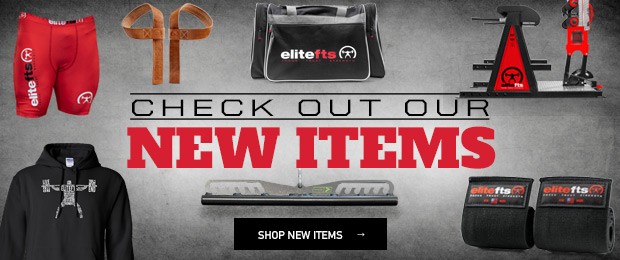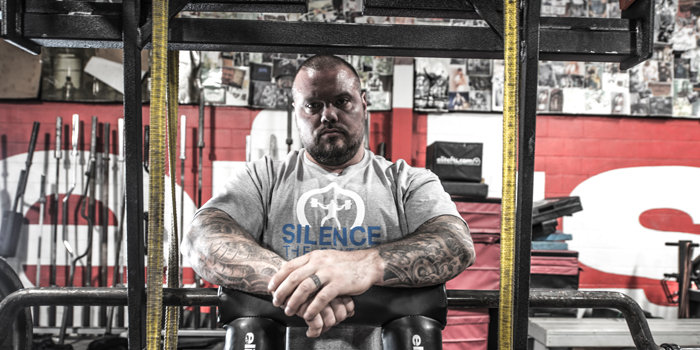
I’ve interviewed some friends of mine who work in the same field before, and I decided to do it again. So I got in touch with Steffen Smith, Nick Novacich, Steve Konopka, Steve Welch, Tyler Jennings, Jeff Miller, and Chris Thacker, and they all agreed to collaborate with me for Round 2.
For this article, I asked everyone:
“Besides squatting, in your opinion and from your experience, what is the next best movement to improve the lifters 1RM squat? It can be anything from a secondary movement, an accessory, a certain machine, or something else, with a reasoning or example of why.”
It is great to get advice from friends across the country and hear what works for them. It is my hope that after reading this, the reader will pick up something to help them perform a better more powerful squat.
This should help take away some trial and error on the reader’s part as well. There is no wrong or right with the answers they gave. This is something that has helped them.
Steffen Smith, raw lifter at Max Barbell Gym in Springfield, Illinois
There are many variations, bars, exercises, and approaches to improving the squat. Much of what is prescribed is based on the demands of the lifter, how they squat, any weaknesses that need to be corrected, as well as where a lifter is in regards to their periodization, along with what kind of periodization they are running.
Because I work mostly with competitive lifters, I’ve selected one of my personal favorite variations that I prefer going into a meet. Pin squats, dead squats, whatever you want to call them, are a great way to stimulate the body for a strong squat in competition. There are a few reasons why I’ve selected this movement.
- I prefer to use a SSB. Not only does this make the squat more difficult, but it also forces the lifter to use their back, driving into the bar, doing the concentric portion of the movement. I also like to keep straight bar squats to a once-per-week frequency, mainly because my lack of shoulder mobility destroys my elbows and forearms when using straight bar, so the SSB is a great way for me to get extra volume in without having to deal unnecessary inflammation.
- This will aid in strength coming out of the hole, where most squats are missed, as well as teach the lifter to continue to accelerate past the second-most missed portion of the lift; just above where the momentum from the speed from the reversal stops, unless you continue to accelerate.
- When performing them as prescribed, in this case, 2-5 weeks from a competition, the resistance is very high, this will teach a lifter to “grind.” These won’t be fast, but max effort lifts aren’t, and some lifters need to learn how to do this. Not everyone is a natural.
The movement is simple. Eliminate the eccentric portion of the movement by placing the SSB on pins in a squat rack at a position or height for the desired depth.
Place yourself under the bar in a fashion that resembles and emulates your squat, foot position, foot width, etc., then squat upward/stand up. The intention should be to move as quickly as possible and do not let off the throttle. Continue pushing into the bar as hard as you can, regardless of how slow the bar is moving.
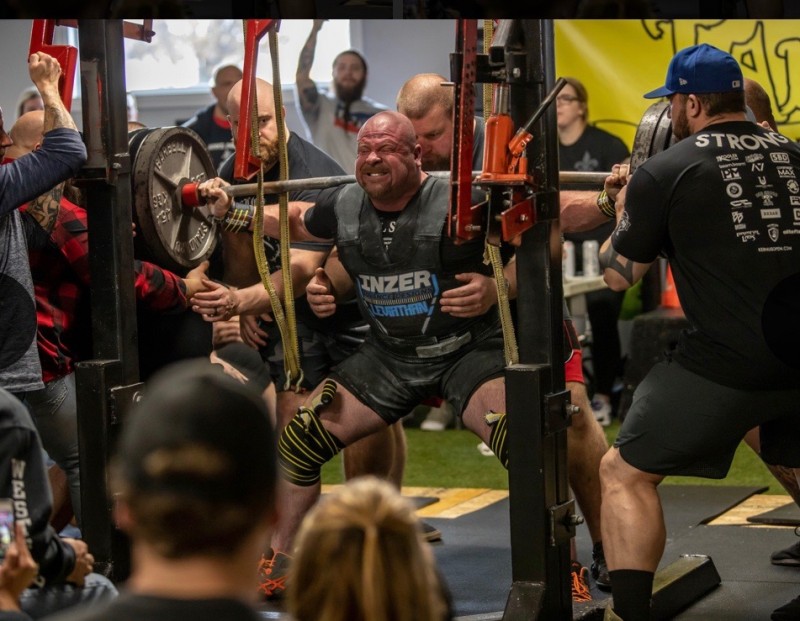
Nick Novacich, multi-ply lifter at Tanks Training Facility in Granite City, Illinois
When my pal Tank asked me to write a segment on my favorite accessory exercise for squat, I couldn’t help but just say, “Squat more!”
I personally love to just hit a ton of sets and reps on squats to help my squat and do not get too wrapped up in fancy accessories to bring my numbers up. With this said, I also have a tendency to just do what I enjoy, so for my last meet prep cycle, I turned all of my programming over to Jason Coker to shake things up and get out of my rut.
The plan was two-fold: first was to have someone new and more experienced to help dial in my form. The second was to have someone force me to do what I needed to do to get stronger instead of simply retreading what I enjoyed doing.
Coker watched videos of me training, and we discussed at length any issues I had in my prior meets. He immediately cleaned up my form, which made my squat more efficient. He also took note that I consistently burned out in meets by the time I hit deadlifts. Recognizing this issue, he quickly came up with a brutal idea on how to correct this problem.
Coker immediately took me way out of my comfort zone and made me do some form of deadlift after every heavy squat session. This was pretty rough at first. We quickly noticed that by adding deadlifts to my squat sessions not only increased my endurance for deadlifts, but also helped increase my squat! We then built the remainder of my accessories around this new concept, and I quickly began making gains in strength and also added some new muscle mass.
I have to be honest, this form of programming sucked, but ultimately proved beneficial because I recently hit my biggest meet total of my career. You can’t argue with results.
If anyone reading this has had issues similar to mine during meets or simply wants to try something different to bring up their squat, try deadlifting immediately after heavy squats. I recommend you hit a variety of sets, reps, and utilize accommodating resistance to really overload yourself. I personally prefer to do fewer reps per set on deadlifts and like to increase volume by simply doing more sets (think 10 sets of 2 reps, etc.). I bet you will see an increase in both lifts on meet day.
I hope this proves beneficial for anybody reading this. On a side note, please take the time to assess your own training and don’t be afraid to throw something out that is not helping you achieve your goals. If you find yourself in a rut, don’t be afraid to reach out to someone with more experience than you and either hire them to coach you or at least try to solicit their advice (the nice folks will always be willing to help).
Please feel free to contact me on either Instagram @knuckledragger202 or by email at knuckledragger202@yahoo.com, and I will try to help where I can.
Steve Konopka, strength and conditioning coach at Strength N Honor Training in Simsbury, Connecticut
Improving Lifters 1RM for squat.
This can go into 1,000 directions all depending on what that individual’s weakness is in the squat your trying to increase. Are they weaker in the hole; is it a mobility issue, weakness in their core, or a need to increase their stopping, starting, or reversal strength?
Though I am a bar-bending meathead at heart, I do not train athletes that are just powerlifters. All my clients are athletes using squats as a tool to increase performance and become more injury resistant (and what a great tool it is). So my answer might differ a little compared to the other great coaches on this interview.
The powerlifters’ game per se is the squat, where everything else falls by the wayside to get those insane numbers higher even by the smallest increments.
My football or lacrosse players cannot sacrifice speed or quickness to add an extra 10-15 pounds to their 1RM instead of just 8 pounds. There comes a point where the risk versus reward is not worth it for a field athlete. With that said, we do try to smash PRs in the squat, deadlift and bench because these, in my opinion, are the best tools to build the foundation for performance and injury resistance. The auxiliary lifts and training are what make the strength gains from the Big 3 lift carry over to the field come game day.
So the long-winded answer for me is going to be Heavy Ass Sled Drags or Prowler Pushes. I see a direct carry over from these, especially when the athlete starts using sled drags and pushes for the first time or consistently for the first time. The angle and motion of the exercises keep them in an athletic position especially with ankle flexion, shin angle and knee drive. So it is an exercise I consider having direct strength carry over to the field.
The other aspect that I think is overlooked by some is the amount of tension that the athlete has to create to initiate and continue the movement of the sled. The athlete learns to create more irradiation or full body tension to perform this exercise. When the loads on the sleds are high, this is the same type of tension and full body bracing that is needed to increase 1RM as well.
When I see new plates being added to the sleds for an athlete I know a few pounds are going to be added to the squat bar in the weeks to follow.
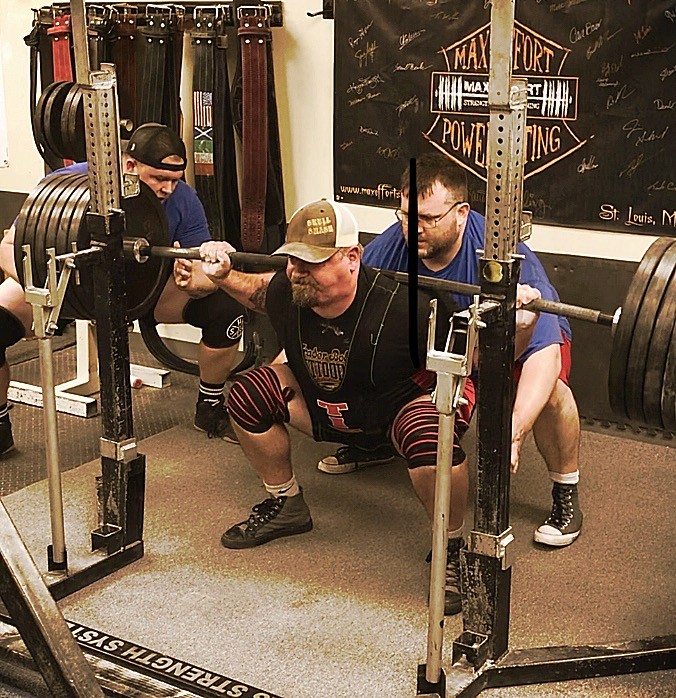
Steve Welch, single-ply and raw lifter, owner of Max Effort Strength and Conditioning in St. Louis, Missouri
It’s difficult to say what the “best” variation of a lift is, or what the “best” assistance exercises are, because that will vary for each individual, what their strengths and weaknesses are, and what they are training for. But I can say that throughout my years of training, competing in powerlifting, and coaching full-time, two variations of the squat that are consistently my favorites for developing the squat are paused squats and front squats. I will break each one down a little and explain why I like them. Keep in mind as you read this, I’m choosing these with the mindset of developing a stronger raw squat. I believe that a strong raw base is necessary to be as good as you can be even in multi-ply gear as well.
Let’s start with the paused squats. Paused squats can be brutal, and they certainly challenge the most vulnerable part of the lift, the bottom of the squat (aka “the hole”), which is why I like them so much. To be as good as you can be in a lift, you have to make the hardest parts routine and confident for you. When you’re sitting in the bottom of the squat, the most eccentric phase of the lift, with the furthest to go to complete the lift, you’re at your most disadvantaged spot, therefore you should be very confident, strong, technical and well-trained there.
The normal barbell back squat builds a tremendous amount of reversal power, and utilizes the stretch reflex, which is advantageous, and in terms of the competition style powerlifts, it’s the only one of the three lifts we get to utilize this in its fullest.
The deadlift, when performing just a single repetition like you do in competition, has no eccentric phase (lowering the weight before you raise it). We can create a little stretch reflex with our body while we set up to lift but nothing compares to the squat where you have to lower your body through a full range of motion and gaining the stretch reflex before lifting it. And in the normal “gym lift” bench press, there is indeed a stretch reflex, and it can be used very effectively.
However, in powerlifting, we have to rest the bar motionless on our chest until given the command to lift the weight up again. While there is still some stored elastic energy in the tendons and muscles, much is lost depending on how long your pause is. So the squat is the ultimate out of the three lifts for reversal ability. Having said that, it seems counterintuitive to add a pause to a lift where the sport doesn’t require one, and the biomechanic principals of the lift don’t naturally create one.
So why do I like it? Because of the resiliency and confidence it builds at this point of the lift, where the lifter is scrutinized for depth by the rules of powerlifting, and because of the technique improvements it affords. Even for squatters who don’t compete in powerlifting, hitting proper depth is important. It’s almost impossible to maintain “bad form” while sitting motionless in the bottom of the squat with a bar in your back. The body sort of has to “right” itself to be able to effectively support itself and the load it’s holding on its back to be able to stay static in this position. This is one reason I like this variation.
Another reason is that while it does lose some of its reversal and stretch reflex benefits, it still creates a great deal of strength in all the squat muscles and connective tissues, but the increased time under tension draws heavily on the stabilizing musculature as well.
I rarely, if ever, use the pause squat as a main variation, or at near max loads. This is an exercise I use to aid the squat, but don’t feel it’s best used as a primary movement in a training program. I typically do 2-5 sets of reps, varying from as low as 2 to as high as 5-6. I rarely do high reps with pause squats. If 6 beltless reps in good form begin to be easy, then it’s time to add a little weight. I’ve had a lot of success with pause squats for myself, as well as many of my clients. If used properly, and strategically placed in a program, I believe them to be an effective tool for nearly anyone.
Next is the front squat. The front squat is an awesome compound joint strength exercise, which I think is often underutilized in strength programs outside of Olympic lifting. I know a lot of bigger lifters don’t use it because they are too bulky or too banged up from joint injuries, and haven’t been able to develop the technique or ability to effectively hold the bar on the front of the shoulders.
In my opinion, if you can’t front squat, you have problems with your overall mechanics, mobility, and athleticism, that’s what should arguably be addressed, even if you don’t want to front squat. If you take a little time to develop the ability to safely hold the bar and maintain good posture throughout the lift, the front squat will make you a better back squatter... I firmly believe this.
Now, before you go and start citing all kinds of examples of specific athletes, perhaps even yourself, who have big squats, but can’t front squat, keep in mind that exceptions always apply, and also that I’m saying that being able to front squat well will only help your back squat... I’m not saying it’s 100 percent compulsory for success in the back squat. We all know that specificity of training is a real thing, and that back squatting well is most important for being good at back squatting. But the front squat is an excellent squat variation, and is one of my favorites for building the squat.
In general, the front squat puts more emphasis on the quads and mid and upper back. They are also tremendous at building abdominal / “core” strength when done properly. I have seen countless athletes, especially novice lifters, lightweight men, and many female lifters get “folded” or get pushed forward in the squat because of weakness in the thoracic spinal muscles. The front squat develops strength in this region, where the back squat has a greater emphasis in the lower back. So, while the back squat places a lot of emphasis on the hamstrings, glutes, hips and low back, the front squat shifts focus to the quads and mid and upper back.
Since the deadlift is also so posterior chain dominant, like the back squat, it’s a good idea to use the front squat to balance out your strength and muscular development, if you can safely perform the movement. And once again, the front squat requires more mobility and greater demands for posture, so if at all possible, take some time to become good at this lift.
There is not one particular place in a training block that you should have these, and there is no one perfect training day of the week they should be done. That all depends on you, what you’re training for, and what your needs/wants are. For me personally, the majority of the time I front squat, is on my main deadlift day. Once again, it balances out all the muscles taxed from deadlifting, and it gives me another day of squats in my program.
So those are just two squat variations. There are many other worthy and excellent ones as well, and it’s important that you and your coach explore the utility in each movement and make selections that suit your needs best. The pause squat and front squat have always served me well, and when done properly, and properly placed in your program, will likely suit you well, too. Thanks.
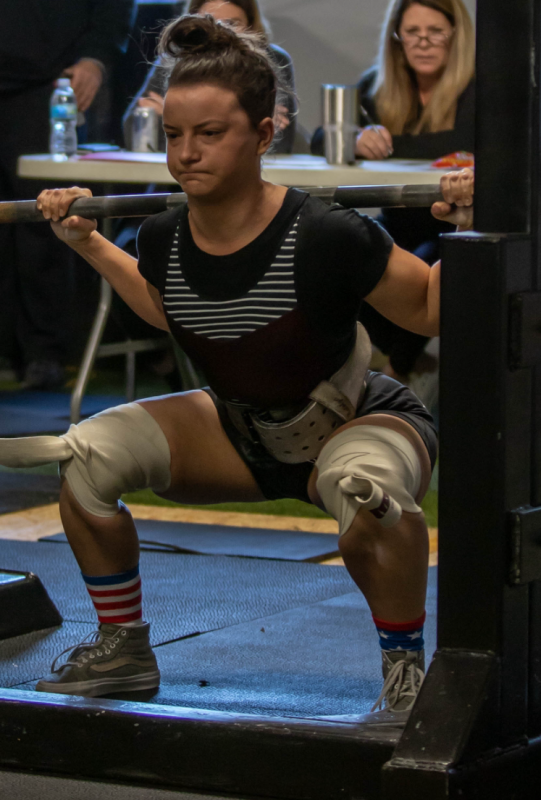
Tyler Jennings, raw powerlifter and coach at Tanks Training Facility in Granite City, Illinois
If I had to pick one movement to increase 1RM squat and to build strength in general, it would be pin squats. How I like to set this up is to have the bar stop in the bottom of the squat, have the lifter pause for a short time on the pins, then drive out with as much force as possible. What this does is breaks up the eccentric and concentric part of the lift and eliminates the use of the stretch reflex in the hole.
Teaching one to generate power from a dead stop and from compromised positions that one can often get in when attempting a new 1RM also teaches and helps you understand the cue of driving your back into the bar. I’ve seen new lifters put 25 pounds on a squat just by understanding and implementing this cue.
Jeff Miller, multi-ply lifter at Diablo Barbell in Concord, California
I will start by saying what works for me may not work for you. We have different strengths/weaknesses, experience levels, body types, etc. With that being said, my favorite/most effective supplementary movement for the squat is the Low Box Squat. For me, that is 12 inches or lower. When I see my low box squat go up, I see my competition squat go up. First, let’s quickly touch on a few of the numerous benefits of box squatting:
- It breaks up the eccentric (downward motion) and concentric portion (upward motion) of the lift, helping to build force production and absolute strength.
- You hit the same depth every time, taking the guesswork out of it.
- You can recover quicker than doing regular squats.
- It’s a great teaching tool to learn the squat/hone technique.
- It takes a lot of tension off of the patella tendons, making it easier for people who have knee issues.
- It overloads the posterior chain, building the muscles needed for a big squat.
You hear a lot of people knocking box squats, but my belief is they’re just not doing them correctly. And for a move with so many benefits already, why take the box lower?
I do them wide-stance, close-stance, with bands, chains, different bars, etc. More than any other exercise, I feel they continue to build/make my hips stronger, and they continue to tremendously build my lower back. They also build big power out of the hole, and as a bonus, they have helped my deadlift quite a bit! Lastly, having been a quad dominant squatter, the lower the box even more so, overloads/builds my hips, hamstrings, glutes, and lower back.
I typically use these as my supplemental movement, after my main lift on Max Effort day. I will usually go 4 sets at 3-5 reps, with about 70-80 percent of my low box squat max. I use a 12-inch box, and would encourage anything 2 or more inches below parallel. Heck, Louie talks about John Stafford sitting to a 6-inch box and Chuck routinely using 12-inch boxes.
Low Box Squat Tips (nothing new here):
- Stay tight and don’t rock off the box: Stay tight on the box, or you’re losing the benefit of breaking up the eccentric/concentric motion. You are going to lose the kinetic energy that you stored on the way down.
- Don’t lose your arch on the box: This will cause you to round out, therefore making it more likely to get into the quads, which defeats the purpose of the box squat.
- Keep big air in the belly, pushed out against your belt the entire time: Not only will this help keep you stable and tight; it will help protect the low back.
- Keep the shoulder blades locked back and down / drive your head back: Creating an extremely tight shelf on your back will ensure the bar is in the right spot. Also, when you get your upper back as tight as possible, the weight will feel much lighter than if you didn’t. The body also follows the head, so be sure to drive your head back as opposed to up or down.
Chris Thacker, raw lifter at The Lab in St. Louis, Missouri
Such a tough question to answer, especially when you start applying to an individual athlete. The number of squat variations alone could run off the page like Bubba Gump’s shrimp list. Personally, I have credited two specific secondary movements that have made a big difference for me over my competitive career and both have had their place with a number of athletes we work with at The Lab, the first one being pause work. Plain and simple, you should be able to pause your opener.
There is so much more to be considered with pauses, but this is about the best secondary movement for a 1RM Squat, I’ve gotta go with front squats. Painful bastards, trust me, I know. I’ve always been a low bar guy, not for any reason other than it being the most comfortable for me. So, needless to say, the Front Squat was definitely an acquired taste and for the majority of my life, I just flat out avoided it.
Then, a little over four years ago, my brother, Justin Thacker, wrote a squat program that had much less volume than what I was used to, but the sneaky fucker wedged the volume back in by pushing FS’s after the Back Squat work. He was seeing great improvement in his own and said, “Hey, give this an honest run. I promise you, your numbers will go up.”
Within 4 months, I added 10 kilograms (22 pounds) from meet to meet. Inside of nine months, I put 100 pounds on my 1rm-training squat. At 12 months, 50 kilograms (110 pounds). In December 2014, I hit a 573-pound squat in competition, and then in December 2015, I smoked a legal depth 683 pounds in training.
This format, or a variation of it, has been the driver behind the success of several of our strength athletes: powerlifting, weightlifting, strongman, and yes, even CrossFit.
Pointing out the obvious, the Front Squat forces you to keep your chest up, which results in a stronger tighter upper back. This is almost an instant fix for those that look like they Good Morning everything and especially anyone that gets folded in half when the weakest link in the chain fails. I won’t go into the difference it makes on the quads versus hams versus glutes debate, just far too many variables there and an exercise in futility (I’ll clue you in on a little secret: They are all still working very hard).
For weightlifters, this is obviously a key element in their training arsenal. For a powerlifter, it’s a monster game changer. Great weightlifters have a very tight ratio FS/BS of 85 percent or even more. As a powerlifter, that ratio is going to suck, however, given the loads are not as high as your typical Back Squat, the exchange in the volume of work is not as debilitating as, say, 6-8 Back Squat work sets versus 3-4 BS work sets, followed by 3-4 FS work sets.
You’re still getting in quality squat work, but now you can’t cheat the upper back out of the much-needed attention it probably needs. Once you adapt to this miserable (but extremely important) exercise, then you can apply all kinds of “fun” bullshit, like pauses, tempos, and of course, the 1RM...
Hope you enjoyed Part 1 on the squat. Stay tuned for Part 2, in which we will cover the bench press.










